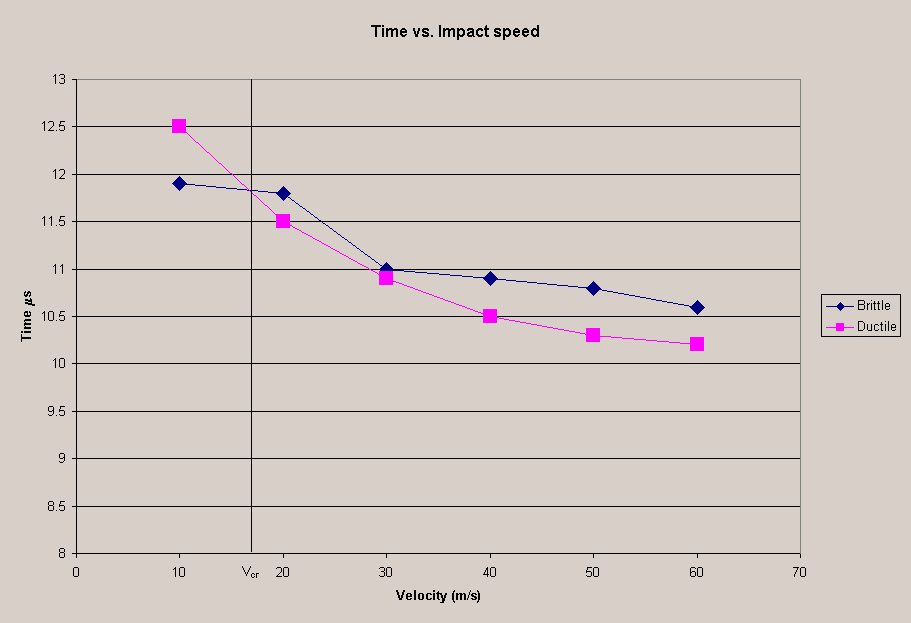This assignment involved determining the critical impact velocity for a sample of Tungsten. The critical impact velocity occurs between a tensile crack formation caused when Vo<Vcr and a shear band occuring when Vo>Vcr.
The critical velocity was found using a finite element model. The model was modified with the following material properties for Tungsten:
Yield Stress (A) = 1505.79 MPa
Characteristic of Strain hardening (B) = 176.50 Mpa
Characteristic of Strain hardening (n) = 0.12
Characteristic of Strain rate hardening (C) = 0.016
Characteristic of Strain rate hardening (Tm) = 257 GPa
m = 1.00
The model was then run for six impact speeds (10,20,30,40,50, and 60 m/s).
Charts were then processed from the results to show the maximum principal
stress vs. time and the effective stress vs. time. The following
are examples of these charts for an impact speed of 60 m/s:
The other charts can be found at the following site: ftp.sv.vt.edu/crcd/jubarker
The values for the time of brittle failure were taken from the plot of maximum pincipal stress vs time. Brittle failure is assmed to occur when the max. tensile principal stress reaches 2 GPa. This value was used because the sample never reached the predicted stress of 3.179 GPa found by the following equation: Stess = 2[A+B(0.002)^0.12].
The values for the time of ductile failure was taken from the plot of effective stress vs. time. Ductile failure occurs when the Von Mises stress returns to 90% of its maximum value.
The following chart shows a plot of the ductile and brittle times vs. the implact speeds. The point where the plots cross is the critical value.
The critical velocity for Tungsten is approximately 17 m/s.
